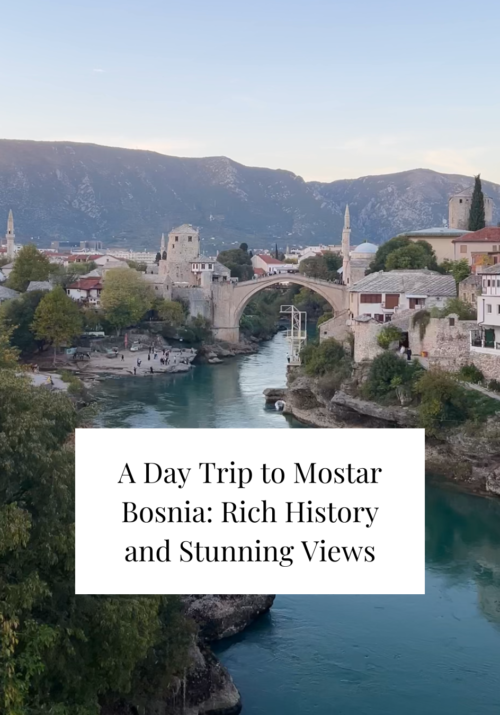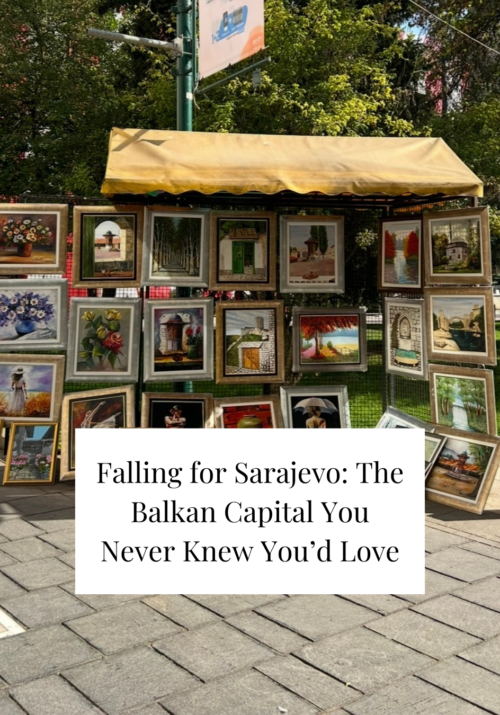
Tucked away in the northwestern corner of Bosnia and Herzegovina, Una National Park is one of Europe’s last truly wild nature escapes. Often overshadowed by its famous neighbour, Plitvice Lakes in Croatia, you don’t want to miss Una if you, like me, is a lover of undiscovered and peaceful nature.
Established in 2008, this 19,800-hectare paradise protects the untouched wilderness around the Una, Krka, and Unac rivers – and trust me, is well worth the challenging logistics of getting here.
In this guide, we’ll cover everything you need to know before you visit—from entrance info to top sights, best activities, and how to get there.
Where is Una National Park
Only 55km from its famous Croatian neighbor Plitvice Lakes, Una National Park also offer jaw-dropping travertine formations and cascading waterfalls BUT without the crowds (and with a tad more logistical dread).
Entrance fee
According to Una National Park’s website, each entrance has the following entry fees:
Entrance 1, 2 & 3: 12km / €6
(Entrance 4 is not accessible)
Entrance 5: 5km / €2.5
Entrance 6: 4km / €2
However when I visited in October 2024, I drove through entrance 1 and 5 without getting stopped or seeing any signs indicating payment was necessary. There was payment stops with official workers when entering both Štrbački buk and Milancev Buk – however these fees are different than the above stated (read further down the entry prices to the respective sights). I can’t tell if the fees were not enforced due to it being off-season when I went, or if they simply don’t check, but bring extra cash, just in case.
What to see in Una National Park
The park is renowned for its waterfalls, with Štrbački Buk being one of the most famous. The Una river offers opportunities for rafting, kayaking, and fishing as well as diving (yes you heard that right)




Štrbački buk
Entry fee: 8km / €4 (cash only)
Deep within Una National Park literally across from the Croatian border lies one of the country’s most dramatic waterfalls. Štrbački buk, a 24 meters high and 40-meter-wide waterfall, consists of several waterfalls that connect.
What makes this location particularly special is how untouched it remains. Unlike many popular waterfalls around the world, there are minimal man-made structures near the falls, preserving the area’s completely natural environment.
Because Štrbački buk is the most popular sight in Una National Park there’s a few stalls and souvenir shops in the area before heading down the wooden path towards the waterfall. They’re not pushy at all, so make sure to have a look and support the locals.
Please respect: NO DRONES allowed




Martin Brod
Entry fee: 3km / €1.5 (cash only)
An hour from Štrbački buk, still inside Una National Park, you can visit Martin Brod. A charming village where the Unac River kisses Una (lovely right) and home to the largest waterfall complex in the Una National Park.
Milancev Buk, one of the waterfalls in Martin Brod, spans 800 meters with a 54 meter high difference, creating an intense but stunning cascade.



Kulen Vakuf
In the Middle Ages, Kulen Vakuf was the most fortified town in the upper reaches of the Una River. Its development and expansion of the fortress continued during the Ottoman rule in Bosnia and Herzegovina. Here you can see several fortress ruins, including Havala, as well as the Kulen Vakuf bridge (Originally called Kasaba Džisr-i-kebir (Turkish: Great Bridge)) on the river Una, which was founded by the construction of the mosque of Sultan Ahmed I (1603-1617).
Lohovo
“Walk along the forest path from Dvoslap to Troslap (2km). Here there are accommodation facilities (apartments, rooms and a small camp), catering, a farm house, an eco village, a souvenir shop, a boat and bicycle rental service, and the possibility of boating on the river Una is offered. Considering that near the entrance no. 6 are the bases of most rafting agencies, it is possible to arrange a ride on the river Una in rafts and kayaks” (read more HERE)
Orašac
Directly before entrance 3 is this mediaeval village build on the remains of the eponymous Old Town of Orašac, which was built between 1703 and 1730, created in the Ottoman period. Here local families spend their time in agriculture, raising animals and making honey!

Activities in Una National Park
River rafting
The most famous activity in the park is white water rafting on the river going down Štrbački buk!
There’s several companies who offer river rafting in the park. Read more here
Trekking
Una National Park doesn’t yet have established hiking trails beyond a 5-kilometer educational path from Cukovi to Štrbački Buk. But for adventurous souls, this means uncharted territory to explore.
Safety note: While the national park is mine-free, some surrounding areas aren’t completely cleared, so stick to the marked paths.


How to get to Una National Park?
Unless you join a day-trip tour, you unfortunately need a car to explore the park.
Road conditions: Despite horror stories about Balkan roads, the routes around Una National Park are in excellent condition. Some gravel sections and single-lane roads exist, but nothing your average rental car can’t handle.
Pro tip: Base yourself in Bihać as car rentals are more available here.
So yes, the logistics require more planning than your average tourist site. But the reward? Having some of Europe’s most spectacular scenery virtually to yourself.
When to Visit Una National Park
May through September offers warm weather perfect for swimming and outdoor activities. I visited in October, which offered stunning colors but colder temperatures (though perfect for me).


